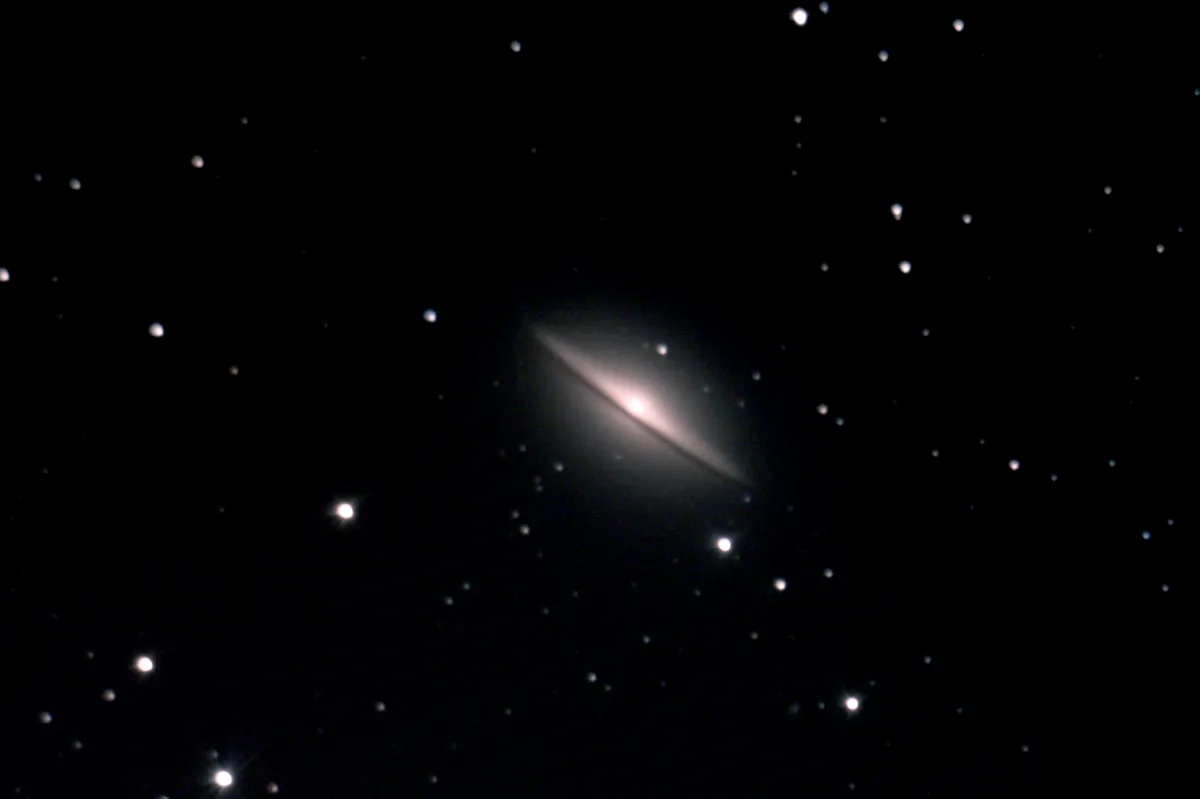The Sombrero Galaxy, M104, is an edge-on galaxy located 28 million lightyears away in the Virgo constellation.
Shining at a magnitude of +8.0, the Sombrero Galaxy cannot be seen with the naked eye, but you can easily see it through binoculars or a small telescope on a clear, dark night.

It's best seen during springtime and can be found on the border of constellations Virgo and Corvus, not far from star Spica.
Through binoculars, the Sombrero Galaxy looks like a small oval smudge of light, but through a decent telescope its hat-like shape is obvious.
This is also true of the magnificent Hubble Space Telescope image of M104, which really shows off its intricate beauty.

Facts about the Sombrero Galaxy
M104, as it is formally known in the famous Messier Catalogue, is nicknamed the Sombrero Galaxy due to its edge-on appearance, which makes it look like the famous broad style of hat.
With a mass of about 800 billion Suns, it's one of the most massive objects in the Virgo Galaxy Cluster (which also contains the famous Markarian's Chain).
It's an edge-on galaxy, meaning we see only see it edge-on from our perspective on Earth, as opposed to the beautiful face-on spiral galaxies that tend to hog the limelight!
Like many other edge-on galaxies such as the Needle Galaxy and NGC 891, the spiral structure of the Sombrero Galaxy is hidden from us here on Earth, due to the galaxy's tilt.
What is visible in images, however, is the thick dust lane bisecting the bright galactic centre.
A supermassive black hole 1 billion times the mass of our Sun lies at the galaxy's core.

The Sombrero Galaxy's prominent dust lane is a region of fierce star formation, as gas and dust coalesces and collapses to ignite the process of star formation.
It's also thought to be home to up to 2,000 globular clusters, which at about 10-13 billion years old are some of the oldest objects in the Universe.
It may not be as flashy as some other face-on spirals, but we think this is one of the most beautiful known galaxies, and it's not surprising that it's a popular target for astrophotographers and observers alike.
In November 2024, astronomers released an image of the Sombrero Galaxy captured by the James Webb Space Telescope.
Images
Below is a selection of images of the Sombrero Galaxy.
For more info on how to photograph galaxies, read our deep-sky astrophotography guide or our tutorial on image processing.
And don't forget to send us your images. You can also share them with us via Facebook, Twitter and Instagram.







